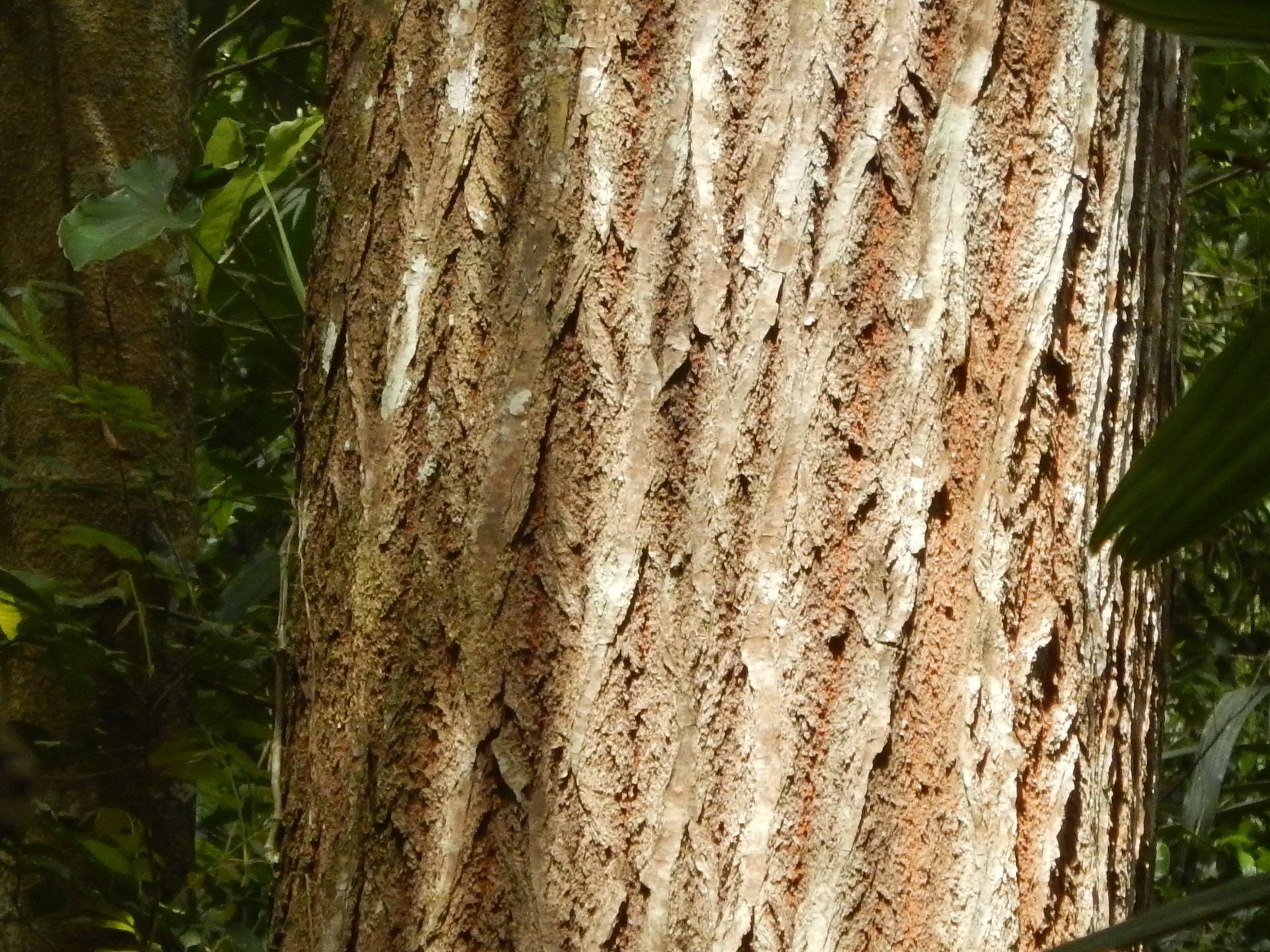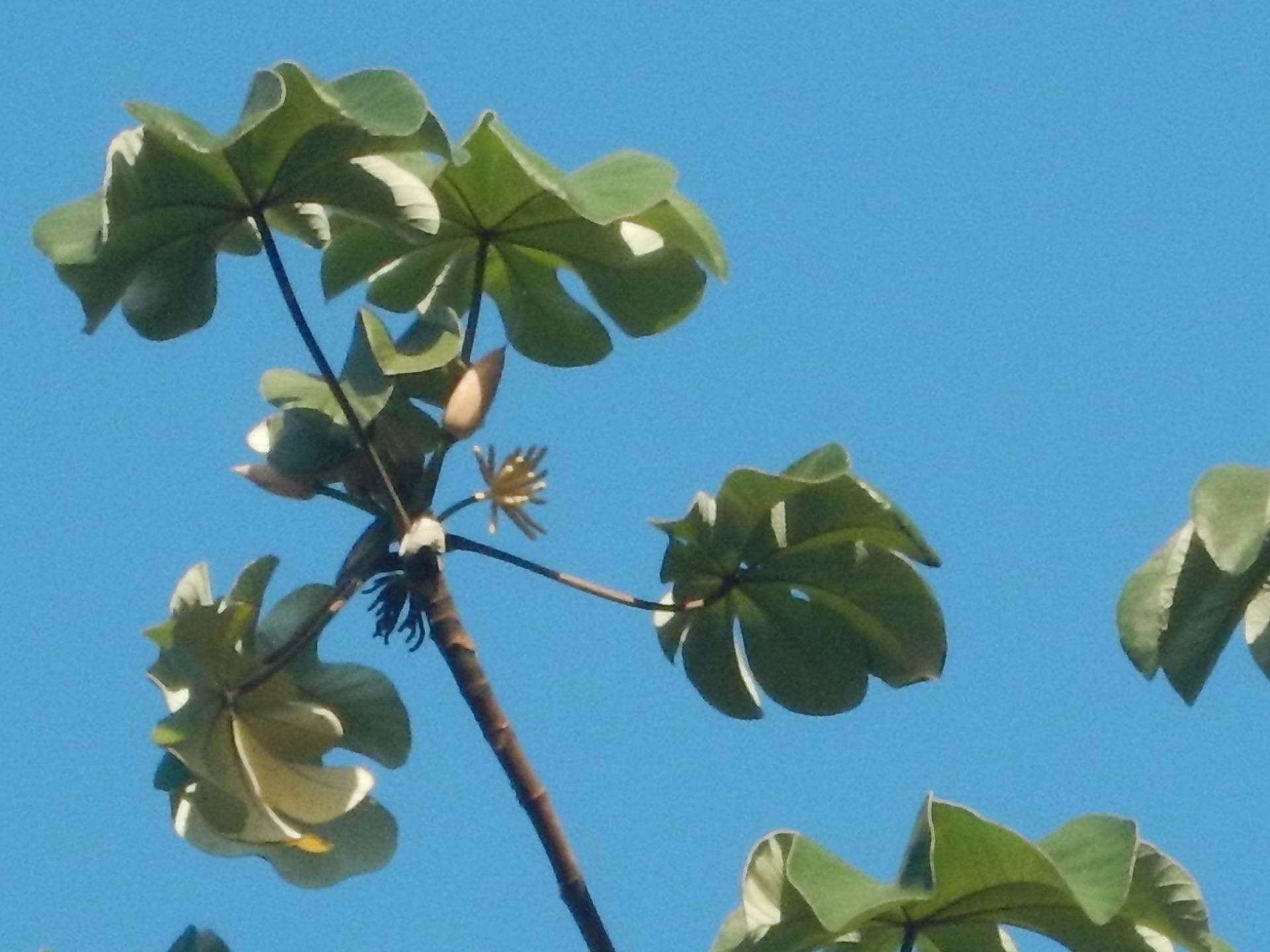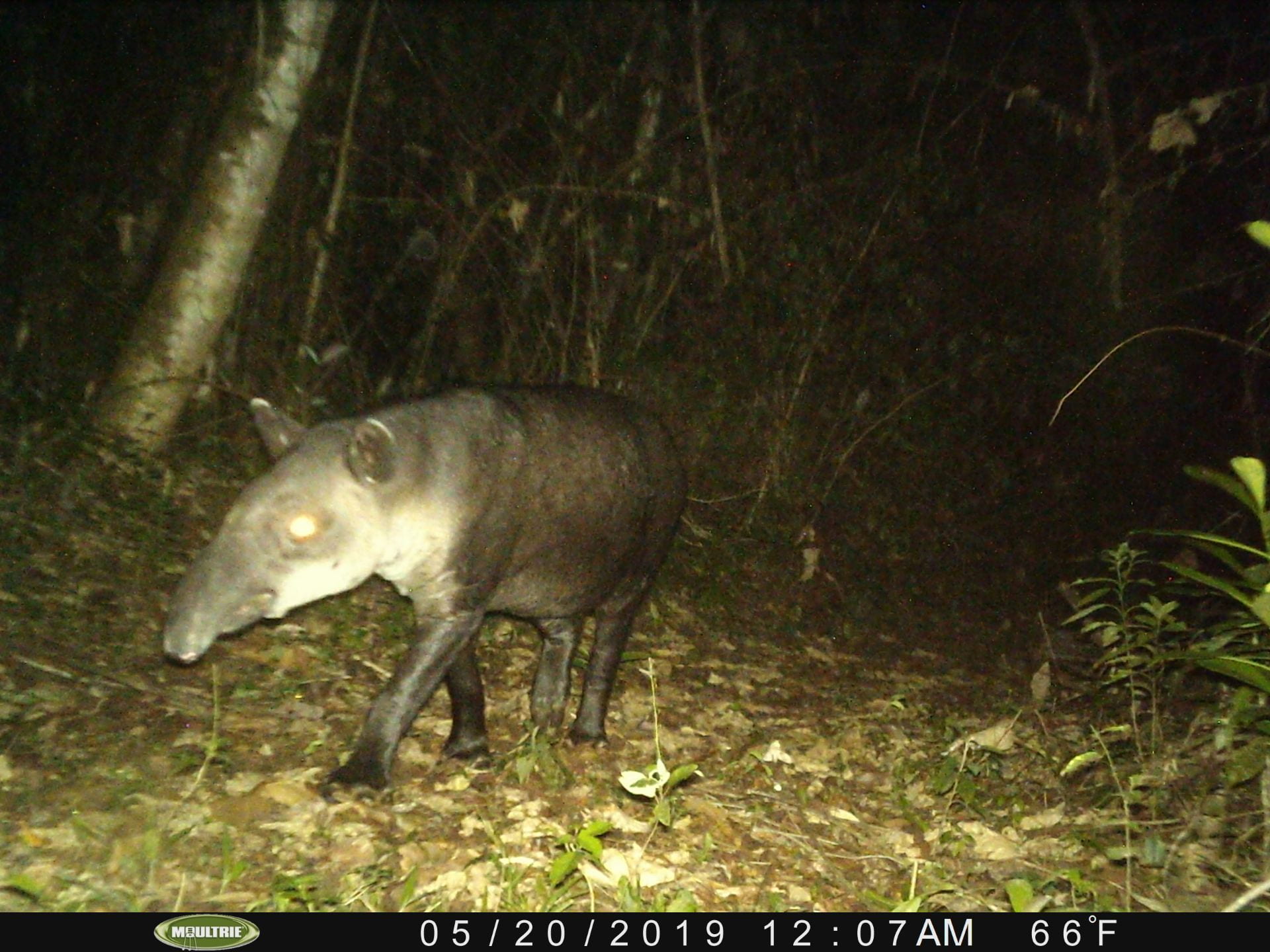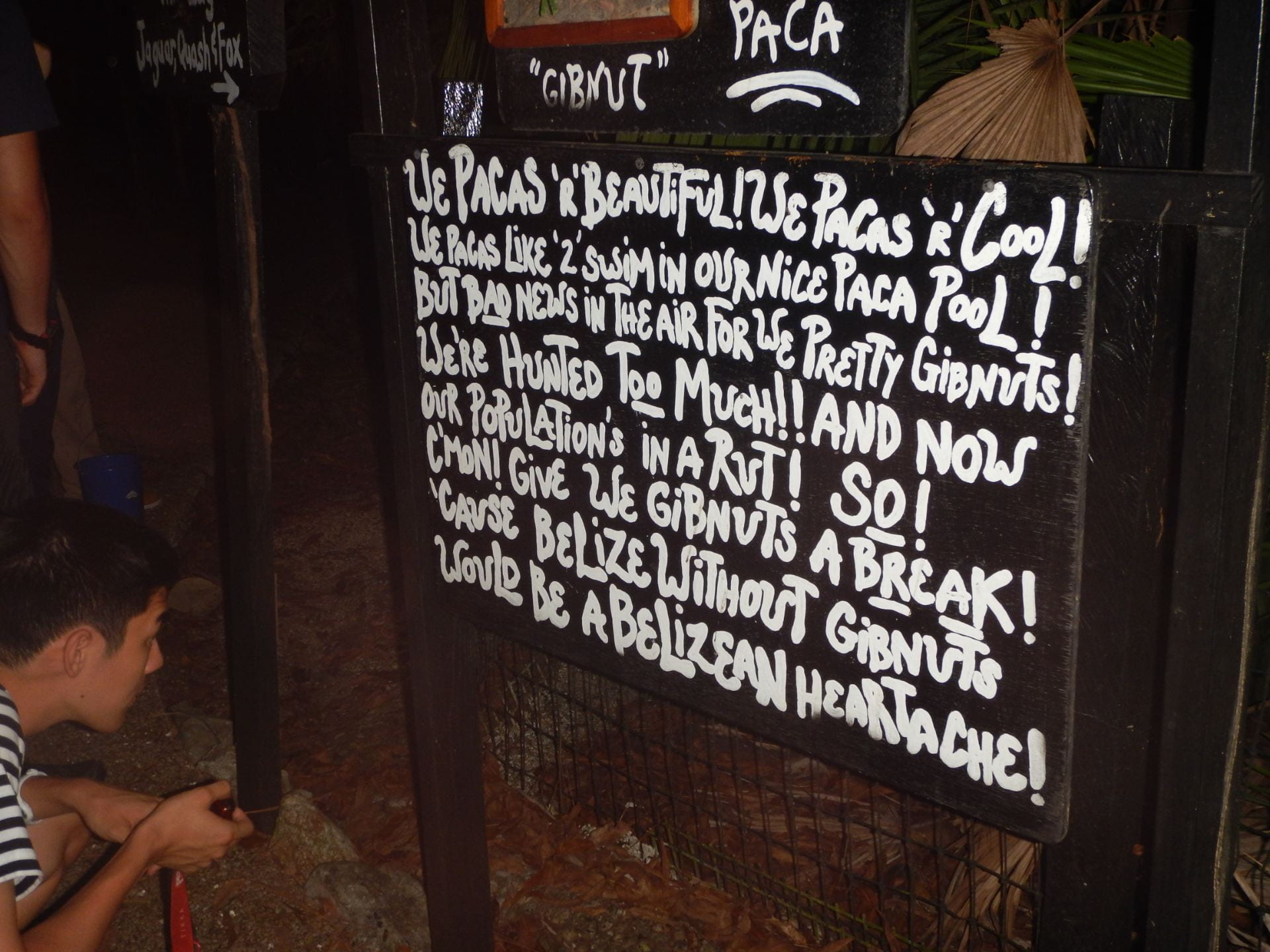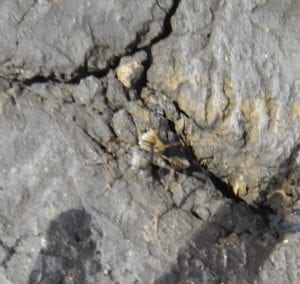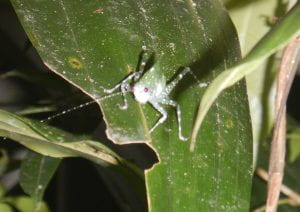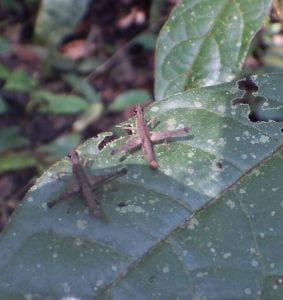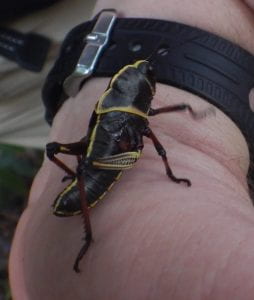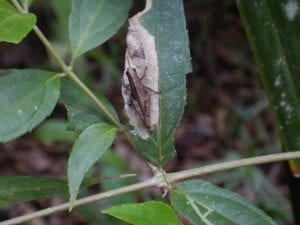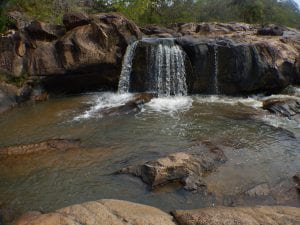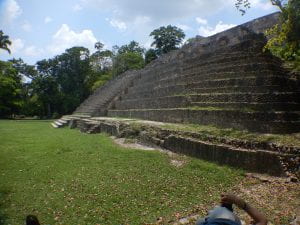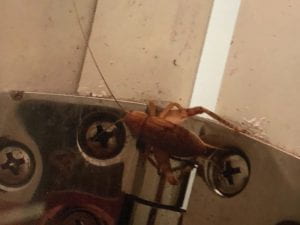Today we set up the camera traps for our week-long research project. We are testing the impact of the human disturbance at the research station is significant on diversity of animal species, so we will count species and individuals caught on the traps over the week. Setting up the traps involved hiking multiple trails in the area, so we saw a lot of wildlife.
This morning we hiked to a 50 hectare plot, which is an area marked for research purposes, to set up three cameras in that direction at 15 minute walking intervals. Onn the way there, we saw a mahogany and a fiddlewood tree, which were marked by the research station. In terms of trees, we saw Give-and-Take palms, another spiny palm called a Basket Tie-Tie, several Gumbolimbo trees, and at least a few Sapodilla. We also saw a small tree that I thought might be a Poisonwood tree, but it was too small to tell for certain. I was using leaf characteristics for identification—none of us were willing volunteers to test out the burning properties of the caustic sap.
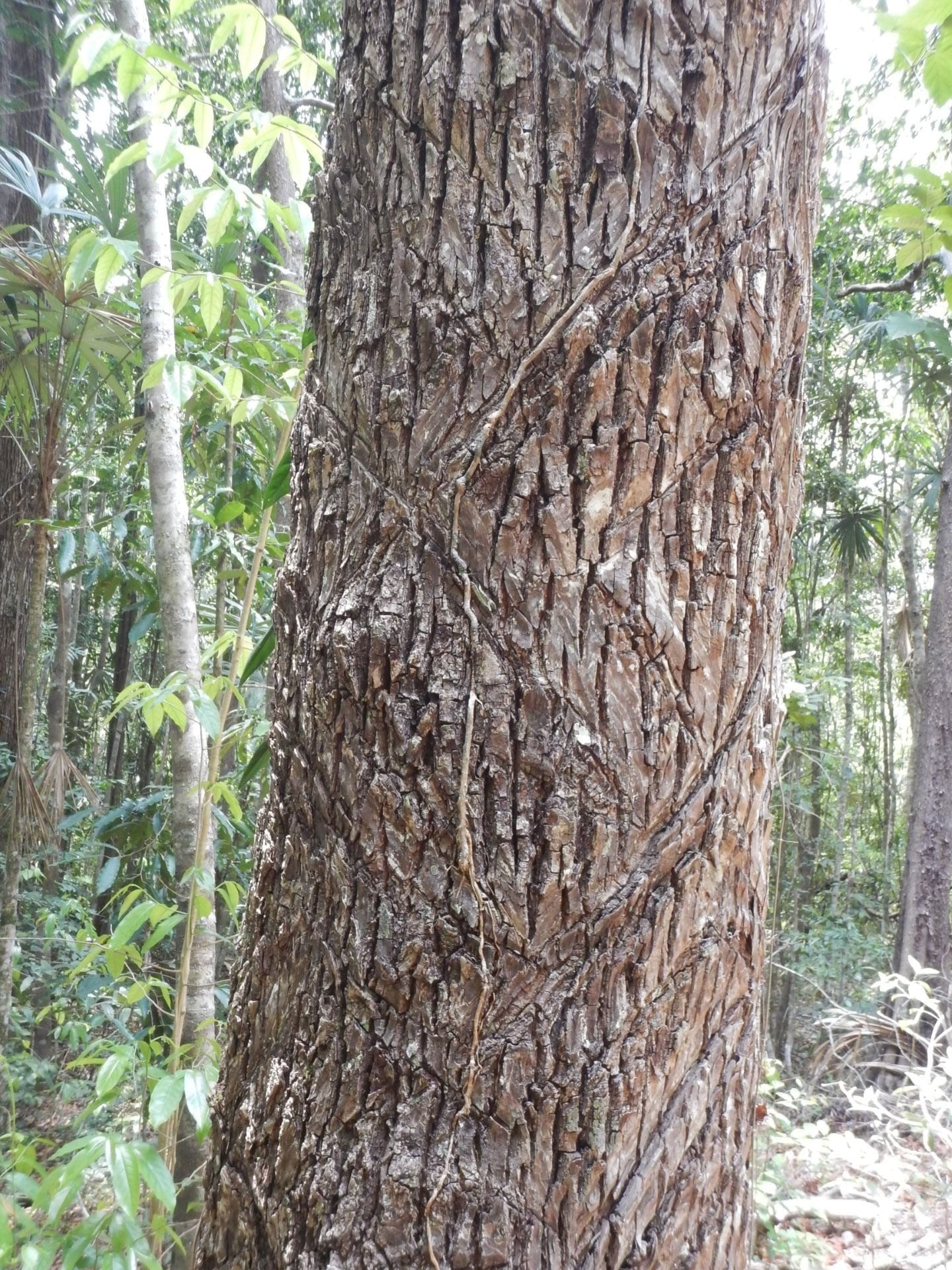
On the same walk, we also saw spider monkeys for the first time. They remained high up in the branches, but hung around to look at us. It seemed they were as curious about us as we were about them. “Observe how poorly acclimated to the forest are these humans,” their tour guide could say. And that would be true, although Scott said we would find the hiking easier at the end of our stay here. We did not measure distance, but we spent a few hours in the morning and another few in the afternoon hiking out to place the cameras.
In the afternoon we hiked the Monkey Tail Trail. It was threatening rain, but we only got a few drops and a few distant thunderclaps. It is possible that the rain was captured higher in the canopy by epiphytes (some of these are known as airplants) or other organisms and did not reach us on the rainforest floor. The trees we saw on this hike included more Gumbolimbo. I could see why this was called the tourist tree. It is given the name because it is red and peeling like the sunburn of a tourist unaccustomed to the intensity of the sun here. It is also used locally as a remedy for a range of ailments from colds to gastrointestinal problems to measles to sunstroke. We also saw the Bull Thorn Acacia, which has hollow pairs of thorns in the shape of a bull’s horns which are inhabited by ants. The tree produces food and provides shelter for the ants in a way that induces the ants to defend the tree as they would any other nest. As a result, if you disturb the tree (especially if you break a thorn), you may be attacked by ants. This protects the tree from predators and describes a symbiotic relationship because both species involved benefit.
In addition to some interesting beetles, we came back from the hike with quite a few ticks each. Apparently ticks here don’t carry any serious diseases, but are mostly a nuisance. Picking them up today was the result of travelling an overgrown trail, and especially affected those who were not wearing insect repellant and/or were not trying as much to avoid brushing against the brush.
Note: We still have very limited wifi and may not be able to post at regular intevals.

